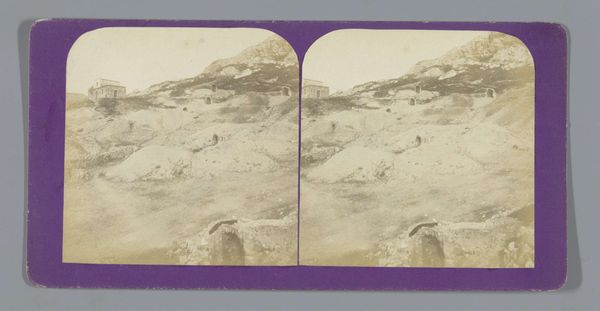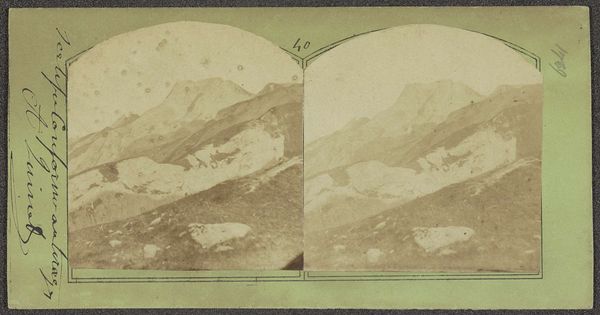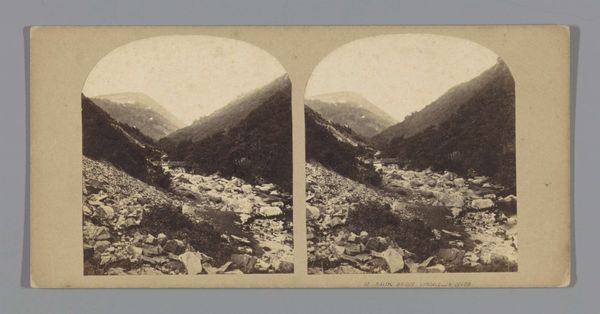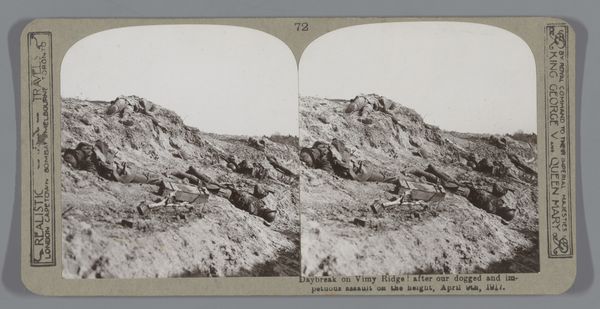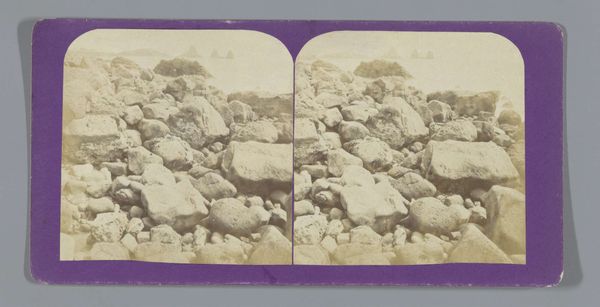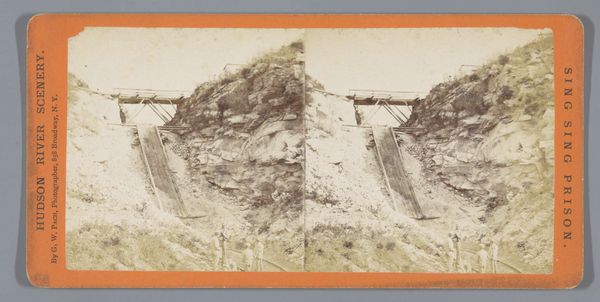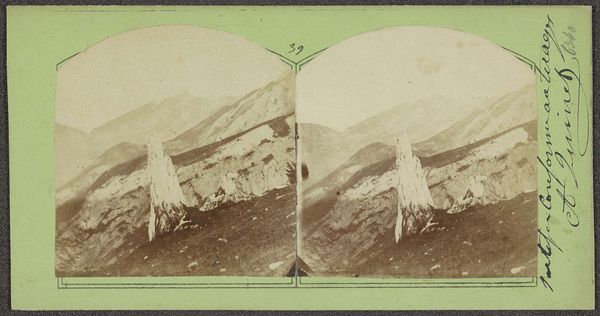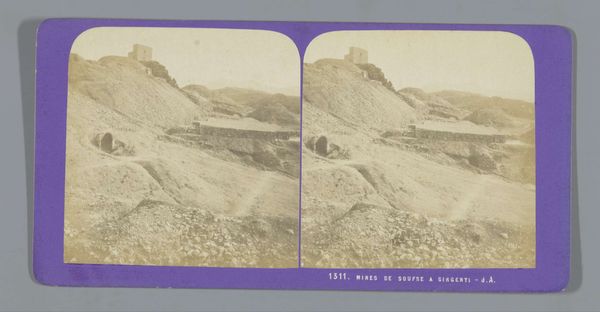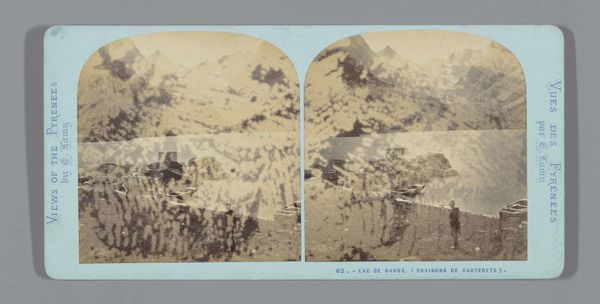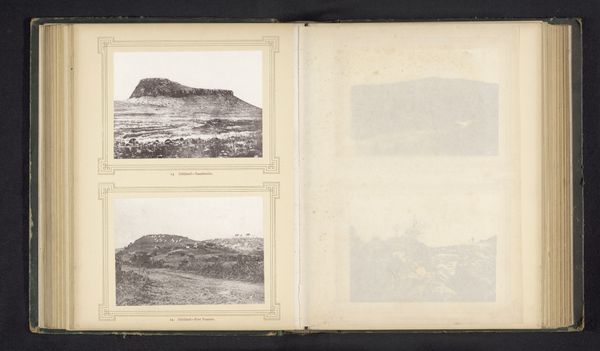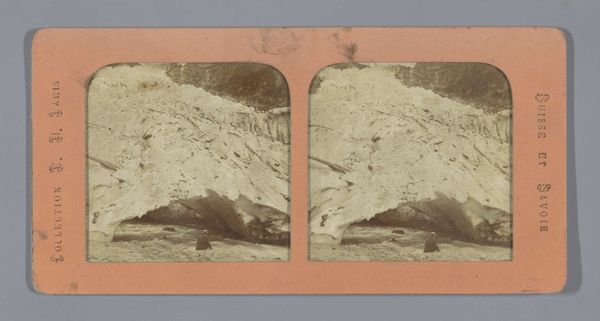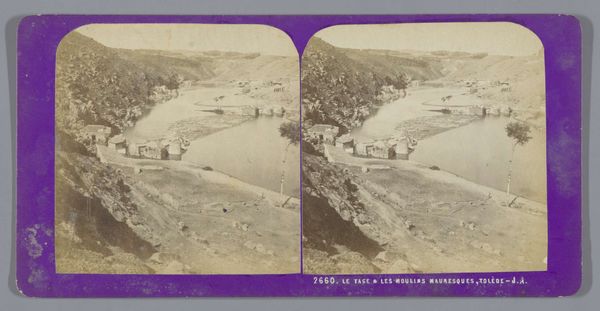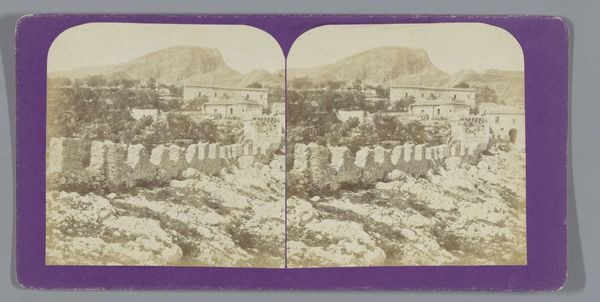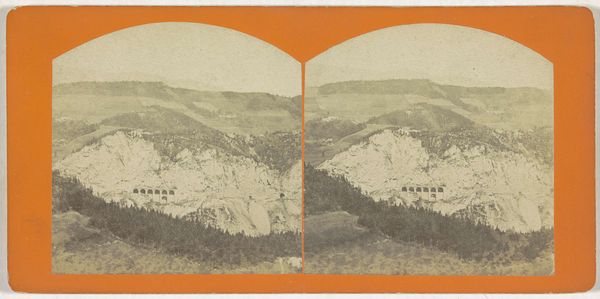
photography
#
landscape
#
photography
#
coloured pencil
#
realism
Dimensions: height 88 mm, width 177 mm
Copyright: Rijks Museum: Open Domain
Curator: This stereoscopic photograph from sometime between 1862 and 1876 captures a view of the sulphur mines of Agrigento. The photographer was Jean Andrieu. Editor: The scene evokes a strange mixture of serenity and unease. It's quite stark; almost lunar, the composition really emphasizes the undulating barrenness of the landscape. Curator: Absolutely, the photograph documents the harsh realities of sulphur mining. It has long carried complex cultural weight for the working conditions in these types of mines in this time period. These mines were known to use forced labour and convict labour; many people's lives would have been altered irreparably from involvement in them. It is the underbelly of this area's history that we must reckon with. Editor: Yes, that reality contrasts sharply with what, as a picture, is quite subtly beautiful. The play of light and shadow creates a sculptural quality. You see how Andrieu utilizes this sepia tone to add a sense of antiquity, an almost romantic distance? There’s a formal elegance despite the subject matter. Curator: Perhaps Andrieu was influenced by romantic notions of the picturesque even when depicting a less palatable industry. This photographic format—the stereoscopic view—was intended to offer viewers an immersive and believable experience of a foreign location. It also offered the option to bring some of the sublime to a new middle-class audience. It's worth considering who these pictures were for, what kind of viewer was imagined. Editor: It really makes one wonder about the impact of such stark scenes, reproduced and consumed, likely without consideration of the lives that existed on this difficult landscape. It reminds one that even documentary images can and should be deconstructed. Thanks for bringing some very valuable historical insight. Curator: Thank you; it’s essential we explore all avenues, that we consider that symbols in imagery shape not only our perceptions but also cultural narratives.
Comments
No comments
Be the first to comment and join the conversation on the ultimate creative platform.
